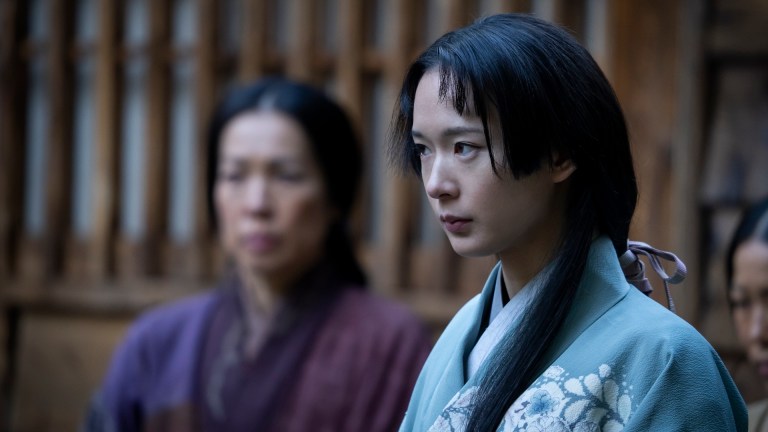Shogun Episode 4: Fuji’s Consort Role Explained
Usami Fuji just became one of John Blackthorne's most important allies on Shogun.

This article contains spoilers for Shogun episode 4.
As depicted in FX’s Shōgun, Japan’s Sengoku period in the 15th and 16th centuries was a pretty rough time. Perhaps no Shōgun character represents that better than poor Usami Fuji (Moeka Hoshi).
As the noble-born granddaughter of Toda Hiromatsu (Tokuma Nishioka), the closest ally of the powerful Lord Yoshii Toranaga (Hiroyuki Sanada), Fuji’s life was marked by comfort and dignity. Unfortunately that all comes crashing down in the series’ first episode when Lord Toranaga becomes embroiled in a power struggle with Osaka’s Council of Regents. After Fuji’s husband Tadayoshi speaks out of turn at a Council of Regents meeting in defense of his lord, he immediately realizes that he jeopardized Toranaga’s safety in doing so and asks for permission to commit seppuku – a ritualistic suicide to reclaim his family’s honor. Lord Toranaga grants Tadayoshi the right of seppuku and the man kills not only himself but he and Fuji’s only son as well.
By the end of Shogun‘s second episode, all Fuji has left of her family is a box of ashes. Things seem to get even worse for her in episode 4 when Mariko (Ana Sawai) approaches her with a humiliating assignment. Now that John Blackthorne (Cosmo Jarvis) has been elevated to the rank of hatamoto, Fuji is to serve as the English barbarian’s “consort.” Fuji is horrified by this new role and successfully negotiates her time required as Blackthorne’s consort from one year to six months.
Fuji-sama has already gone through hell and back to uphold the wishes of her Lord Toranaga. Why then, was this latest assignment nearly too much of an indignity to bear? What is the role of a consort in Sengoku era Japan anyway? The latest episode of FX’s superb companion podcast for Shōgun explains the concept quite well.
In the fourth installment of the podcast, host Emily Yoshida (who also happened to write episode 4 “The Eightfold Fence”) asks historian Frederik Cryns to explain what a consort is and what their responsibilities entails. This is what Cryns has to say:
“It’s a little bit different in the Japanese and the English, in Japanese they call her seisai which means ‘legal wife.’ Blackthorne, to become a hatamoto, he has to become part of a samurai family. In a way, when he marries Fuji, he’s adopted into Fuji’s family. Now he has the credentials to become hatamoto. William Adams [the real life inspiration for John Blackthorne], he was married to a Japanese wife. He had two children with her. We only know about her that she also came from a samurai family. Toranaga arranging the marriage between Fuji and Blackthorne is quite accurate too.”
Once again, this appears to be a situation in which Shōgun‘s adherence to presenting the story in its native Japanese has enriched the text. Because the English (or Portuguese in this case) term “consort” that Blackthorne hears suggests something far less serious – a household helper, a guide, or potentially even a sexual partner. Fuji’s role as consort is indeed all of those things but it’s also to be Blackthorne’s literal, legally-acknowledged wife. They were no church bells, rings, or vows necessary. With the wave of his hand, Lord Toranaga gave Blackthorne a wife, and with it the full legitimacy of her family’s history as samurai. Now the title of “hatamoto” has some more legitimacy for this white barbarian.
That context gives us a better understanding of why Fuji was so upset with this assignment. Being a stranger’s servant was bad enough, being a stranger’s wife is another thing entirely. Thankfully both Blackthorne and Fuji-sama appear to be growing into their roles nicely. Fuji is greatly honored by Blackthorne entrusting his guns with her and in turn she chooses to gift her house’s swords to him.
Add Mariko and Blackthorne’s romantic trist into the mix and we’ve got the makings of one big happy family – for the next six months at least.
The first four episodes of Shōgun are available to stream on Hulu now. Episodes premiere Tuesdays on Hulu and Tuesday nights at 10 p.m. ET on FX.
